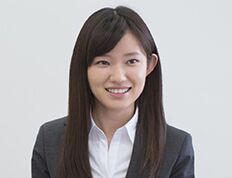中华人民共和国专利法实施细则(一)
|
中华人民共和国专利法实施细则 专利局令第3号 TABLE OF CONTENTS* CHAPTER I GENERAL PROVISIONS Rule 1 Basis of the Implementing Regulations 2 Definitions of Invention, Utility Model and Design 3 Requirement of Written Form for Procedures 4 Language of Documents 5 Filing and Service of Documents 6 Computation of Time Limits 7 Restoration of Right and Extension of Time Limit 8 Applications Relating to State Security 9 Meaning of Date of Filing 10 Service Inventions-Creations 11 Inventors and Creators 12 Prohibition of Double Patenting 13 Record of Patent License Contract 14 Designation of Foreign-Related Patent Agency 15 Dispute Concerning Right to Patent and Patent Ownership CHAPTER II APPLICATION FOR PATENT 16 Application Document; Appointment of Patent Agency 17 Request 18 Description 19 Drawings 20 Claims 21 Independent Claim and Dependent Claim 22 Form of Independent Claim 23 Form of Dependent Claim 24 Abstract 25 Deposit of Sample of Micro-Organism 26 Request for Use of Sample of Micro-Organism 27 Drawings or Photographs of Design 28 Brief Explanation of Design 29 Sample or Model of Product Incorporating a Design 30 Existing Technology 31 Claiming Grace Period 32 Claiming Right of Priority 33 Claiming One or More Priorities; Claiming Domestic Priority 34 Documents Required for Claiming Foreign Priority 35 Unity of Invention and Utility Model 36 Unity of Design 37 Withdrawal of Patent Application CHAPTER III EXAMINATION AND APPROVAL OF APPLICATION FOR PATENT 38 Exclusion 39 Notification of Date of Filing and Filing Number 40 Unacceptable Patent Application 41 Belated Furnishing of Drawings 42 Filing of Divisional Application 43 Date of Filing and Date of Priority of Divisional Application 44 Preliminary Examination 45 Submission of Other Related Documents 46 Early Publication of Patent Application 47 Classification of Products Incorporating the Design 48 Observations on Application for Patent for Invention 49 Documents Concerning Search or Results of Examination to Be Furnished Later 50 Examination by the Patent Office on its Own Initiative 51 Time for Amending Patent Application 52 Form of Amending Patent Application 53 Grounds for Rejecting Application for Patent for Invention 54 Grant of Patent Right 55 Grounds for Revocation 56 Request for Revocation 57 Examination of Request for Revocation 58 Patent Reexamination Board 59 Request for Reexamination 60 Rectification of Request for Reexamination 61 Pre-Examination by Former Examination Department 62 Examination of Request for Reexamination 63 Withdrawal of Request for Reexamination 64 Correction of Mistakes by the Patent Office CHAPTER IV INVALIDATION OF PATENT RIGHT 65 Request for Invalidation 66 Rectification of Request for Invalidation; Grounds for Request for Invalidation 67 Observations by the Patentee CHAPTER V COMPULSORY LICENSE FOR EXPLOITATION OF PATENT 68 Request for Compulsory License; Observations by the Patentee; Grant of Compulsory License 69 Adjudication of Fees for Exploitation CHAPTER VI REWARDS TO INVENTOR OR CREATOR OF SERVICE INVENTION-CREATION 70 Rewards 71 Money Prize 72 Remuneration Drawn from Profits of Exploitation 73 Remuneration Drawn from Exploitation fee of License 74 Disbursement of Remunerations 75 Applicability to Entities Owning Patent Right CHAPTER VII ADMINISTRATIVE AUTHORITY FOR PATENT AFFAIRS 76 Administrative Authority for Patent Affairs 77 Function of Administrative Authority for Patent Affairs to Settle Patent Disputes; Prescription 78 Punishment for Act of Passing Off 79 Jurisdiction of Trans-departmental or Trans-regional Infringement Disputes CHAPTER VIII PATENT REGISTER AND PATENT GAZETTE 80 Patent Registration 81 Patent Gazette CHAPTER IX FEES 82 Kinds of Fees 83 Methods of Payment of Fees 84 Time Limit for Payment of Application Fee 85 Time Limit for Payment of Fees Relating to Examination, Reexamination, Restoration of Right and Revocation 86 Time Limit for Payment of Application Maintenance Fee 87 Time Limit for Payment of Patent Registration Fee and Annual Fee 88 Grace Period for Application Maintenance Fee and Annual Fee 89 Time Limit for Payment of Other Fees 90 Reduction or Postponement of Payment of Fees CHAPTER X SUPPLEMENTARY PROVISIONS 91 Inspection, Copy and Keeping of Files 92 Prescribed Form of Documents; Changes in the Bibliographic Data 93 Sending of Documents by Mail 94 Formal Requirements for Application Documents 95 Interpretation of the Implementing Regulations 96 Date of Entry into Force and Transitional Provisions Chapter I GENERAL PROVISIONS Rule 1. These Implementing Regulations are drawn up in accordance with the Patent Law of the People's Republic of China (hereinafter referred to as the Patent Law)。 Rule 2. “Invention” in the Patent Law means any new technical solution relating to a product, a process or improvement thereof. “Utility model” in the Patent Law means any new technical solution relating to the shape, the structure, or their combination, of a product, which is fit for practical use. “Design” in the Patent Law means any new design of the shape, pattern, color, or their combination, of a product, which creates an aesthetic feeling and is fit for industrial application. Rule 3. Any proceedings provided for by the Patent Law and these Implementing Regulations shall be conducted in a written form. Rule 4. Any document submitted under the Patent Law and these Implementing Regulations shall be in Chinese. The standard scientific and technical terms shall be used if there is a prescribed one set forth by the State. Where no generally accepted translation in Chinese can be found for a foreign name or scientific or technical term, the one in the original language shall be also indicated. Where any certificate and certified document submitted in accordance with the Patent Law and these Implementing Regulations are in foreign languages, and where the Patent Office deems it necessary, it may request a Chinese translation of the certificate and the certified document to be submitted within a specified time limit; where the translation is not submitted within the specified time limit, the certificate and certified document shall be deemed not to have been submitted. Rule 5. For any document sent by mail to the Patent Office, the date of mailing indicated by the postmark on the envelope shall be presumed to be the date of filing. If the date of mailing indicated by the postmark on the envelope is illegible, the date on which the Patent Office receives the document shall be the date of filing, except where the date of mailing is proved by the addressee. Any document of the Patent Office may be served by mail, by personal delivery or by public announcement. Where any party concerned appoints a patent agency, the document shall be sent to the patent agency; where no patent agency is appointed, the document shall be sent to the person first named in the request or to the representative. If such person refuses to accept the document, it shall be presumed to have been served. For any document sent by mail by the Patent Office, the 16th day from the date of mailing shall be presumed to be the date on which the addressee receives the document. For any document which shall be delivered personally in accordance with the prescription of the Patent Office, the date of delivery is the date on which the addressee receives the document. Where the address of a document is not clear and it cannot be sent by mail, the document may be served by making an announcement in the Patent Gazette. At the expiration of one month from the date of the announcement, the document shall be presumed to have been served. Rule 6. The first day of any time limit prescribed in the Patent Law and these Implementing Regulations shall not be counted. Where a time limit is counted by year or by month, it shall expire on the corresponding day of the last month; if there is no corresponding day in that month, the time limit shall expire on the last day of that month. If a time limit expires on an official holiday, the time limit shall expire on the first working day after that official holiday. Rule 7. Where a time limit prescribed in the Patent Law or these Implementing Regulations or specified by the Patent Office is not observed because of force majeure, resulting the loss of any right on the part of the party concerned, he or it shall, within two months from the date on which the impediment is removed, at the latest within two years immediately following the expiration of that time limit, state the reasons, together with relevant supporting documents and request the Patent Office to restore his or its rights. Where a time limit prescribed in the Patent Law or these Implementing Regulations or specified by the Patent Office is not observed because of any justified reason, resulting the loss of any right on the part of the party concerned, he or it shall, within two months from the date of receipt of a notification from the Patent Office, state the reasons and request the Patent Office to restore his or its rights. Where the party concerned makes a request for an extension of a time limit specified by the Patent Office, he or it shall, before the time limit expires, state the reasons to the Patent Office and complete the relevant procedures. The provisions of paragraphs one and two of this Rule shall not be applicable to the time limits referred to in Articles 24, 29, 41, 45 and 61 of the Patent Law. The provisions of paragraph two of this Rule shall not be applicable to the time limit referred to in Rule 88 of these Implementing Regulations. Rule 8. Where the invention for which a patent is applied for by the entity of the national defence system relates to the security of the State concerning national defence and is required to be kept secret, the application for patent shall be filed with the patent organization set up by the competent department of science and technology of national defence under the State Council. Where any application for patent for invention relating to the secrets of the State concerning national defence and requiring to be kept classified is received by the Patent Office, the Patent Office shall transfer the application to the said patent organization. The Patent Office shall make a decision on the basis of the observations of the examination of the application presented by the said patent organization. Subject to the preceding paragraph, the Patent Office, after receipt of an application for patent for invention which is required to be examined for the purpose of security, shall send it to the competent department concerned of the State Council for examination. The said department shall, within four months from receipt of the application, send a report on the results of the examination to the Patent Office. Where the invention for which a patent is applied for is required to be kept classified, the Patent Office shall handle it as an application for secret patent and notify the applicant accordingly. Rule 9. The date of filing referred to in the Patent Law, except that mentioned in Articles 28 and 45, means the priority date where a right of priority is claimed. The date of filing referred to in these Implementing Regulations means the date on which the application for patent is filed with the Patent Office. Rule 10. “Service invention-creation made by a person in execution of the tasks of the entity to which he belongs” mentioned in Article 6 of the Patent Law refers to any invention-creation made: (1) in the course of performing his own duty; (2) in execution of any task, other than his own duty, which was entrusted to him by the entity to which he belongs; (3) within one year from his resignation, retirement or change of work, where the invention-creation relates to his own duty or the other task entrusted to him by the entity to which he previously belonged. “Material means of the entity” mentioned in Article 6 of the Patent Law refers to entity's money, equipment, spare parts, raw materials, or technical data which are not to be disclosed to the public. Rule 11. “Inventor” or “creator” mentioned in the Patent Law refers to any person who has made creative contributions to the substantive features of the invention-creation. Any person who, during the course of accomplishing the invention-creation, is responsible only for organization work, or who offers facilities for making use of material means, or who takes part in other auxiliary functions, shall not be considered as inventor or creator. Rule 12. For any identical invention-creation, only one patent right shall be granted. Two or more applicants who file, on the same day, applications for patent for the identical invention-creation, as provided for in Article 9 of the Patent Law, shall, after receipt of a notification from the Patent Office, hold consultation among themselves to decide the person or persons who shall be entitled to file the application. Rule 13. Any license contract for exploitation of the patent which has been concluded by the patentee with an entity or individual shall, within three months from the date of entry into force of the contract, be submitted to the Patent Office for record. Rule 14. “The patent agency” referred to in Article 19, Paragraph one, and Article 20 of the Patent Law shall, on the authorization of the State Council, be designated by the Patent Office. Rule 15. Where any dispute arises concerning the right to apply for a patent for an invention-creation or the right to own a patent right which has been granted, any of the parties concerned may request the administrative authority for patent affairs to handle the matter or may institute legal proceedings in the people's court. Any party to a dispute concerning the right to apply for a patent or the right to own a patent right which is pending before the administrative authority for patent affairs or the people's court, may request the Patent Office to suspend the relevant procedures. Any party requesting suspension of the procedure before the Patent Office in accordance with the preceding paragraph, shall submit a request to the Patent Office, together with the relevant document of the administrative authority for patent affairs or the people's court before which the dispute is pending. Chapter II APPLICATION FOR PATENT Rule 16. Anyone who applies for a patent shall submit application documents in two copies. Any applicant who appoints a patent agency for filing an application for a patent with, or for dealing with other patent matters before, the Patent Office, shall submit a power of attorney indicating the scope of the power entrusted. Rule 17. Other related matters mentioned in Article 26, paragraph two, of the Patent Law refer to: (1) the nationality of the applicant; (2) where the applicant is an enterprise or other organization, the name of the country in which the applicant has the principal business office; (3) where the applicant has appointed a patent agency, the relevant matters which should be indicated; (4) where the priority of an earlier application is claimed, the relevant matters which should be indicated; (5) the signature or seal of the applicant or the patent agency; (6) a list of the documents constituting the application; (7) a list of the documents appending the application; (8) any other related matter which needs to be indicated. Where there are two or more applicants and where they have not appointed a patent agency, they shall designate a representative. Rule 18. The description of an application for a patent for invention or utility model shall be presented in the following manner and order: (1) state the title of the invention or utility model as appearing in the request; (2) specify the technical field to which the invention or utility model relates; (3) indicate the background art which, as far as known to the applicant, can be regarded as useful for the understanding, searching and examination of the invention or utility model, and cite the documents reflecting such art; (4) specify the purpose which the invention or utility model is designed to fulfil; (5) disclose the technical solution of the invention or utility model, as claimed, in such terms that a person having ordinary skill in the art can understand it and fulfil the purpose of the invention or utility model; (6) state the advantageous effects of the invention or utility model, with reference to the background art; (7) briefly describe the figures in the drawings, if any; (8) describe in detail the best mode contemplated by the applicant for carrying out the invention or utility model; this shall be done in terms of examples, where appropriate, and with reference to the drawings, if any. The manner and order mentioned in the preceding paragraph shall be observed by the applicant of a patent for invention or a patent for utility model, unless, because of the nature of the invention or utility model, a different manner or order would afford a better understanding and a more economical presentation. The description of the invention or utility model shall not contain such references to the claims as: “as described in part……of the claim”, nor shall it contain commercial advertising. Rule 19. The same sheet of drawings may contain several figures of the invention or utility model, and the drawings shall be numbered and arranged in numerical order consecutively as “Figure 1, Figure 2,……”。 The scale and the distinctness of the drawings shall be such that a reproduction with a linear reduction in size to two-thirds would still enable all details to be clearly distinguished. Drawing reference signs not appearing in the text of the description of the invention or utility model shall not appear in the drawings. Drawing reference signs not appearing in the drawings shall not appear in the text of the description. Drawing reference signs for the same composite part used in an application document shall be consistent throughout. The drawings shall not contain any other explanatory notes, except words which are indispensable. Rule 20. The claims shall define clearly and concisely the matter for which protection is sought in terms of the technical features of the invention or utility model. If there are several claims, they shall be numbered consecutively in Arabic numerals. The technical terminology used in the claims shall be consistent with that used in the description. The claims may contain chemical or mathematical formulate but no drawings. They shall not, except where absolutely necessary, contain such references to the description or drawings as: “as described in part……of the description”, or “as illustrated in figure……of the drawings”。 The technical features mentioned in the claims may, in order to facilitate quicker understanding of the claim, make reference to the corresponding reference signs in the drawings of the description. Such reference signs shall follow the corresponding technical features and be placed between parentheses. They shall not be construed as limiting the claims. Rule 21. The claims shall have an independent claim, and may also contain dependent claims. An independent claim shall outline the technical solution of an invention or utility model and describe the indispensable technical features necessary for fulfilling the purpose of the invention or utility model. A dependent claim shall further define the claim which it refers to by additional features which it is desired to protect. Rule 22. An independent claim of an invention or utility model shall contain a preamble portion and a characterizing portion, and be presented in the following form: (1) a preamble portion, indicating the title of the claimed subject matter of the invention or utility model, and those technical features of the invention or utility model which are necessary for the definition of the claimed subject matter but which, in combination, are part of the prior art; (2) a characterizing portion, stating, in such words as “characterized in that……” or in similar expressions, the technical features of the invention or utility model, which distinguish it from the prior art. These features, in combination with the features stated in the preamble portion, served to define the scope of protection of the invention or utility model. Independent claims may be presented in any other form, where it is not appropriate, according to the nature of the invention or utility model, to present them in the form prescribed in the preceding paragraph. Each invention or utility model shall have only one independent claim, which shall precede all the dependent claims relating to the same invention or utility model. Rule 23. A dependent claim of an invention or utility model shall contain a reference portion and a characterizing portion, and be presented in the following form: (1) a reference portion, indicating the serial number(s) of the claim(s) referred to, and the title of the subject matter; (2) a characterizing portion, stating the additional technical features of the invention or utility model. A dependent claim referring to one or more other claims shall refer only to the preceding claim or claims. A multiple dependent claim which refers to more than one other claim shall not serve as a basis for any other multiple dependent claim. Rule 24. The abstract shall indicate the technical field to which the invention or utility model pertains, the technical problems to be solved, the essential technical features and the use or uses of the invention or utility model. The abstract may contain the chemical formula which best characterizes the invention. In an application for a patent which contains drawings, the applicant shall indicate and provide a drawing which best characterizes the invention or utility model. The scale and the distinctness of the drawings shall be such that a reproduction with a linear reduction in size to 4cm*6cm would still enable all details to be clearly distinguished. The whole text of the abstract shall contain not more than 200 Chinese characters. There shall be no commercial advertising in the abstract. Rule 25. Where an application for a patent for invention concerns a new micro- organism, a micro-biological process or a product thereof and involves the use of a micro-organism which is not available to the public, the applicant shall, in addition to the other requirements provided for in the Patent Law and these Implementing Regulations, complete the following procedures. (1) deposit a sample of the micro-organism with a depositary institution designated by the Patent Office before the date of filing, or, at the latest, on the date of filing, and submit, at the time of filing, or, at the latest, within three months from the filing date, a receipt of deposit and the viability proof from the depository institution; where they are not submitted within the specified time limit, the sample of the micro- organism shall be deemed not to have been deposited; (2) give in the application document relevant information of the characteristics of the micro-organism; (3) indicate, where the application relates to the deposit of the micro- organism, in the request and the description the scientific name (with its Latin name) and the name of the depositary institution, the date on which the sample of the micro-organsim was deposited and the accession number of the deposit; where, at the time of filing, they are not indicated, they shall be supplied within three months from the date of filing; where after the expiration of the time limit they are not supplied, the sample of the micro-organism shall be deemed not to have been deposited. Rule 26. After the publication of an application for a patent for invention relating to a micro-organism, any entity or individual which or who intends to make use of the micro-organism mentioned in the application for the purpose of experiment shall make a request to the Patent Office containing the following: (1) the name and address of the entity or individual making the request; (2) an undertaking not to make the micro-organism available to any other person; (3) an undertaking to use the micro-organism for experimental purpose only before the grant of the patent right. Rule 27. The size of drawings or photographs of a design submitted in accordance with the provisions of Article 27 of the Patent Law shall not be smaller than 3cm*8cm, nor larger than 15cm*22cm. Where an application for a patent for design seeking concurrent protection of colors is filed, a drawing or photograph in color, and a drawing or photograph in white and black, shall be submitted. The applicant shall submit, in respect of the subject matter of the product incorporating the design which is in need of protection, the relevant views and stereoscopic drawings or photographs, so as to clearly show the subject matter for which protection is sought. Rule 28. Where an application for a patent for design is filed, a brief explanation of the design shall, when necessary, be indicated. The brief explanation of the design shall include the main creative portion of the design, the colors for which protection is sought and the omission of the view of the product incorporating the design. The brief explanation shall not contain any commercial advertising and shall not be used to indicate the function and the uses of the product. Rule 29. Where the Patent Office finds it necessary, it may require the applicant for a patent for design to submit a sample or model of the product incorporating the design. The volume of the sample or model submitted shall not exceed 30cm*30cm*30cm, and its weight shall not surpass 15 kilos. Articles easy to get rotten or broken, or articles that are dangerous may not be submitted as sample or model. Rule 30. The existing technology mentioned in Article 22, paragraph three, of the Patent Law means any technology which has been publicly disclose in publications in the country or abroad, or has been publicly used or made known to the public by any other means in the country, before the date of filing (or the priority date where priority is claimed), that is, prior art. Rule 31. The academic or technological meeting mentioned in item (2) of Article 24 of the Patent Law means any academic or technological meeting organized by a competent department concerned of the State Council or by a national academic or technological association. Where any application for a patent falls under the provisions of item (1) or item (2) of Article 24 of the Patent Law, the applicant shall, when filing the application, make a declaration and, within a time limit of two months from the date of filing, submit a certificate issued by the entity which organized the international exhibition or academic or technological meeting, stating that the invention-creation was in fact exhibited or made public there and also the date of its exhibition or making public. Where any application for a patent falls under the provisions of item (3) of Article 24 of the Patent Law, the Patent Office may, when necessary, require the applicant to submit the relevant proof. Rule 32. Where the applicant is to comply with the requirements for claiming the right of priority in accordance with Article 30 of the Patent Law, he or it shall, in his or its written declaration, indicate the date of filing and the filing number of the application which was first filed (hereinafter referred to as the earlier application) and the country in which that application was filed. If the written declaration does not contain the date of filing of the earlier application and the name of that country, the declaration shall be deemed not to have been made. Where the foreign priority is claimed, the copy of the earlier application document submitted by the applicant shall be certified by the competent authority of the foreign country; where the domestic priority is claimed, the copy of the earlier application document shall be prepared by the Patent Office. Rule 33. Any applicant may claim one or more priorities for an application for a patent; where the priorities of several earlier applications are claimed, the priority period for the application shall be calculated from the earliest priority date. Where any applicant claims the right of domestic priority, if the earlier application is one for a patent for invention, he or it may file an application for a patent for invention or utility model for the same subject matter; if the earlier application is one for a patent for utility model, he or it may file an application for a patent for utility model or invention for the same subject matter. But when the later application is filed, if the earlier application falls under any of the following, it may not be the basis of domestic priority: (1) where it has claimed foreign or domestic priority; (2) where it has been granted a patent right; (3) where it is a divisional application filed as prescribed. Where the domestic priority is claimed, the earlier application shall be deemed to be withdrawn from the date on which the later application is filed. Rule 34. Where an application for a patent is filed or the right of foreign priority is claimed by any applicant having no habitual residence or business office in China, the Patent Office may, when necessary, require the applicant to submit the following documents: (1) a certificate concerning the nationality of the applicant; (2) a certificate concerning the seat of the business office or the headquarters, if the applicant is an enterprise or other organization; (3) a testimonial showing that the country, to which the foreigner, foreign enterprise or other foreign organization belongs, recognizes that Chinese citizens and entities are, under the same conditions applied to its nationals, entitled to patent right, right of priority and other related rights in that country. |








